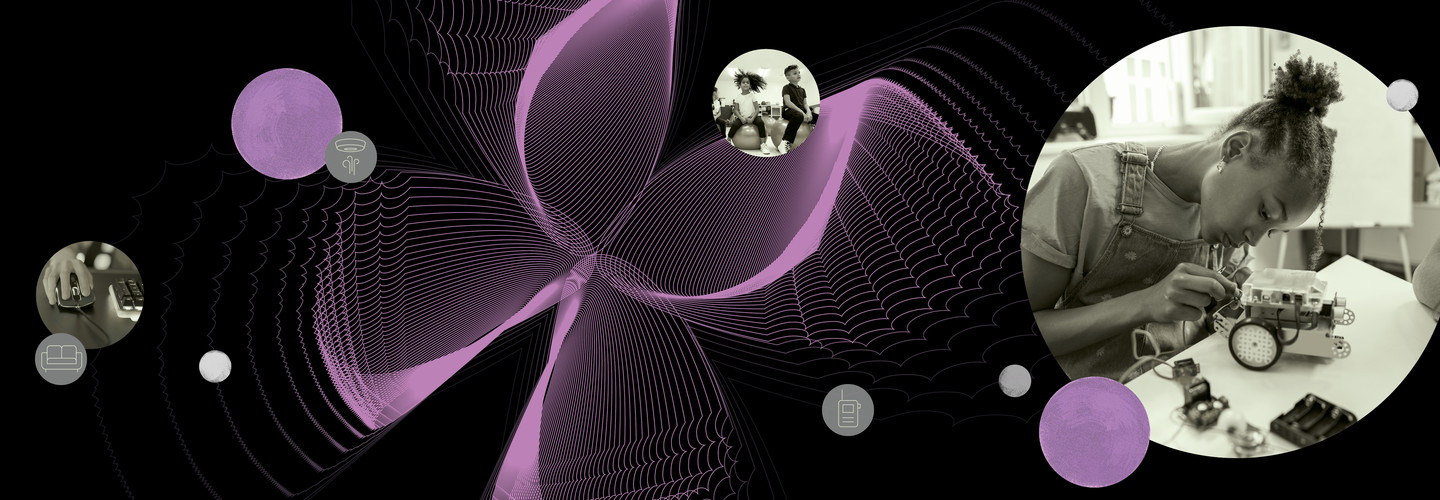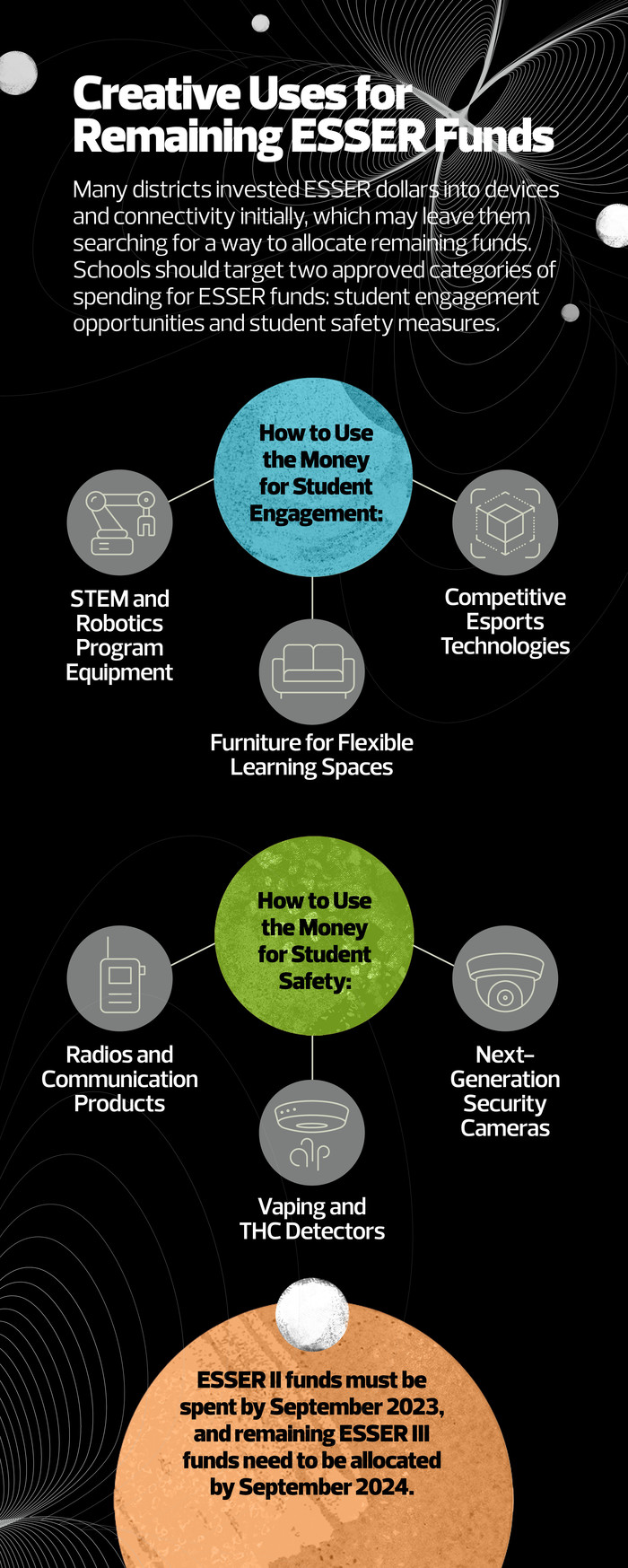2. Create Modern, Flexible Learning Spaces with New Furniture
Valued at $1.9 billion in 2022, school furniture is a booming market, with growing demand for flexible seating in classrooms driving product demand. Flexible seating can “provide comfortable ergonomic options, handle the body weight of students and provide ample room for movement. Multiple seating options, including chairs, yoga balls, couches and springy stools have been gaining traction,” Grandview Research reports.
New desks and chairs, variable-height tables, utility carts, podium carts and other furniture upgrades can help schools design flexible classrooms and learning spaces that support interaction and collaboration. This upgraded furniture can also keep students engaged in learning, supporting schools’ reopening and student engagement initiatives.
DISCOVER: Four ways to personalize learning and teach self-management to students.
3. Get in the Game with Competitive Esports Equipment
Esports, or competitive video gaming, is “a mammoth and growing ecosystem,” according to the International Society for Technology in Education. Ninety percent of teens play video games, making it an activity that is fueled by students, many of whom are “flocking to the lucrative esports world” with its promise of college scholarships.
Schools can support emerging esports clubs and teams by investing ESSER funds in gaming computers, highly responsive gaming mice and keyboards, quality headsets and specialized gaming furniture. Given the high level of student interest, “it makes sense that educators should tap into this phenomenon,” ISTE reports.
Esports has been shown to reach students who otherwise may not have a reason to come to school or engage academically. ESSER funds, allocated to improve student engagement, can be funneled into esports programs for these reasons.
4. Keep Staff Connected with Radios and Communication Products
K–12 districts are investing in radios and security-related communications, with 83 percent of public schools providing two-way radios to staff, according to Pew Research. These communications tools are used not only in the event of emergencies but also to help school staff communicate with buses and other departments within the district.
Schools can tap ESSER funds to extend these efforts. Investments in radio equipment, notification systems and other communication technologies support enhanced school safety, an ESSER priority.
MORE ON EDTECH: Get tips for mitigating safety risks in K–12 schools.
5. Detect Vaping and THC Use in Schools with Environmental Sensors
Vaping, a common term for the use of electronic cigarettes, is rampant in K–12 schools.
In Florida, for example, recent data from the Partner Alliance for Safer Schools (PASS) showed the number of reported tobacco and vaping incidents was “over six times higher than the number of reported fighting incidents.”
“Keeping in mind that while most fights in schools are detected by school officials, e-cigarette violations are often not detected, making this data even more concerning,” PASS reports.












